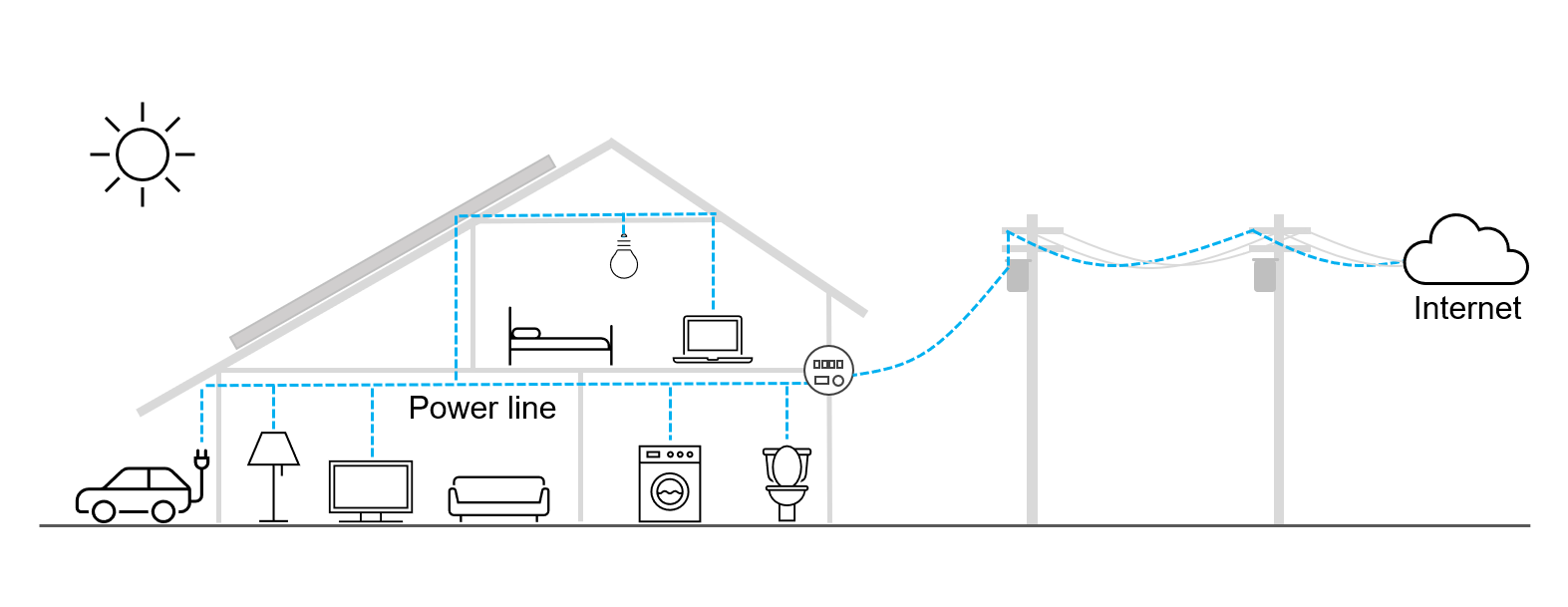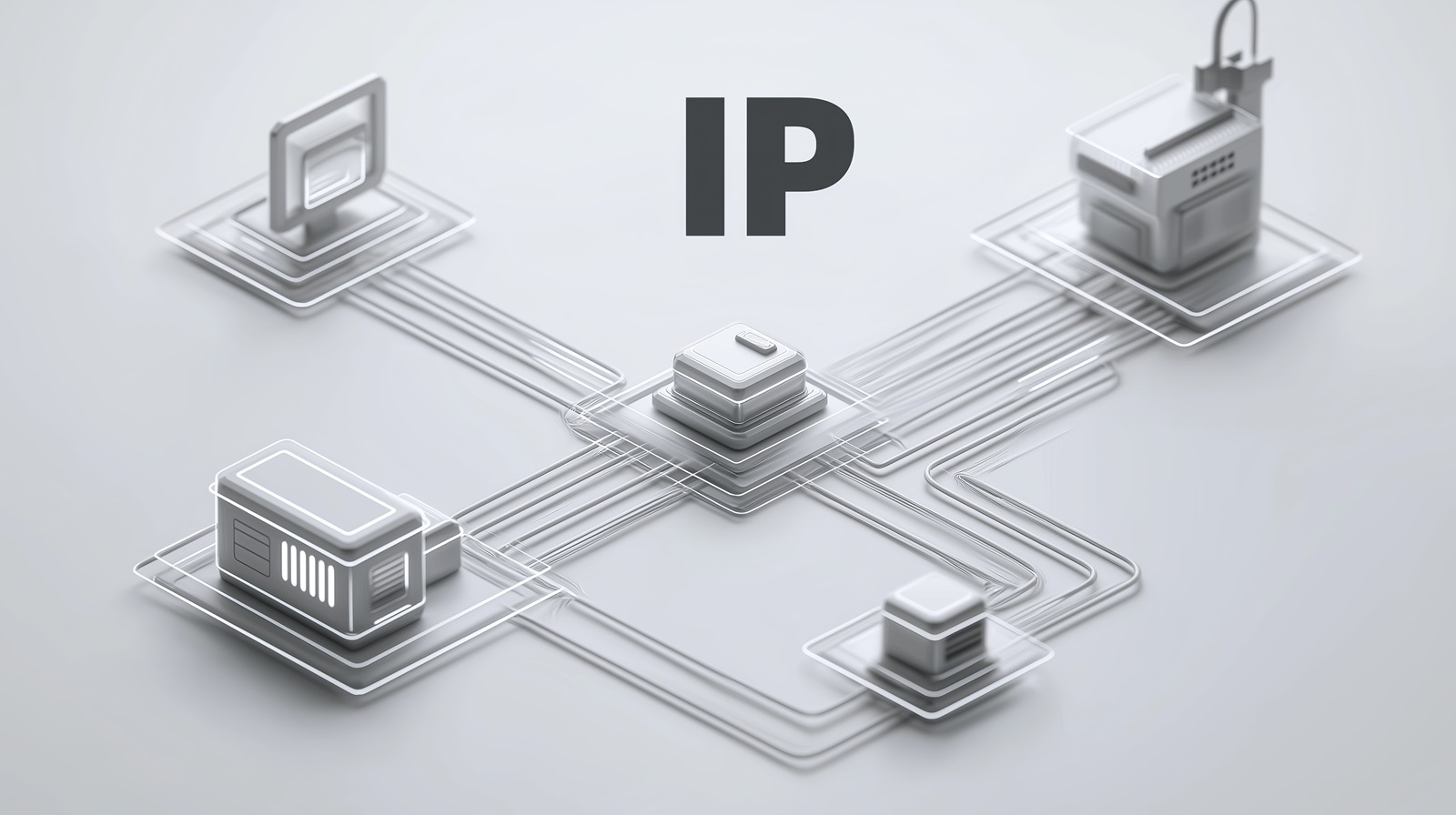What Is Broadband Over Power Lines (BPL)?

Broadband over Power Lines (BPL) is a power line communication (PLC) technology using higher frequencies and a wider frequency band.
This technology enables high-speed communication using existing power lines.
How Does Power Line Communication (PLC) Work?
PLC is a technology that enables the simultaneous transmission of power and data through existing power lines. This eliminates the need for laying new communication cables, allowing for rapid and cost-effective network deployment.
PLC technology encompasses three distinct types, each operating within a specific frequency band: Narrowband PLC, Mid-band PLC, and Broadband PLC. These types exhibit a trade-off between communication speed and range.
- Narrowband PLC – Operating at lower frequencies, Narrowband PLC offers extended transmission distances but supports slower data rates.
- Mid-band PLC – Striking a balance between range and speed, Mid-band PLC utilizes intermediate frequencies to deliver moderate data rates over a reasonable distance.
- Broadband PLC – Employing higher frequencies, Broadband PLC enables high-speed data transmission but has a limited range.
For a more in-depth exploration of PLC technology, please refer to the following comprehensive article:
What Is Power Line Communication (PLC)?
Positioning of BPL Network in IoT System

Advantages and Disadvantages Compared to Wi-Fi and Ethernet
BPL stands as a viable alternative to Wi-Fi and Ethernet networks, offering a unique blend of performance, cost-effectiveness, and reliability.
Let's delve into a comparative analysis of BPL against these established networking technologies.
- Performance – BPL delivers moderate performance, complying with the needs of most IoT applications. While BPL may not match the speed of the latest Ethernet and Wi-Fi, it can achieve Gbps-class physical layer speed. BPL surpasses Wi-Fi in terms of stability and resistance to interference.
- Cost-effectiveness – BPL stands out as a budget-friendly option compared to Ethernet cabling installations. BPL can eliminate extensive new cabling and installation of switching HUBs at 100-meter intervals. It means that BPL significantly reduces overall network setup costs.
- Reliability – BPL is inherently resistant to attenuation from walls, floors, and other obstacles, ensuring a stable and consistent connection. This makes it particularly suitable for applications in challenging environments where Wi-Fi signals may be weak or unreachable.
- Security – BPL offers enhanced security compared to traditional Wi-Fi networks, as the power lines within a building act as a secure medium for data transmission.
- Hybrid Networks – For those seeking the best of each method, a hybrid network combining BPL and Wi-Fi can be an optimal solution. This approach leverages the strengths of each technology, utilizing BPL for backbone connectivity and Wi-Fi for wireless access points.
Types of BPL Technology
| Frequency Band |
Technology Name |
Frequency Range |
Transmission Distance |
Physical Layer Speed |
International Standard |
|---|---|---|---|---|---|
| Broadband | Nessum WIRE | 0.06 - 100 MHz(*) | Long to Short | 7.8125 to 860 Mbps[1] | IEEE 1901 IEEE 1901c ITU-T G.9905 |
| G.hn | 2.0 - 80 MHz | Short | < 1.5 Gbps[2] | ITU-T G.9960 ITU-T G.9961 ITU-T G.9962 ITU-T G.9963 ITU-T G.9964 |
|
| HomePlug | 1.8 - 86 MHz | < 1.3 Gbps[3] | IEEE 1901 |
BPL has three technologies: Nessum WIRE, G.hn, and HomePlug.
Nessum WIRE
The advantage of Nessum WIRE is "Flexibility". Its unique signal processing makes it possible to change the frequency band flexibly. This means you can choose "Long-range mode" or "High-speed mode" depending on the requirements of your system. The physical layer speed can be changed from 7.8125[Mbps] in Long-range mode to 860[Mbps] in High-speed mode. The related standards are IEEE 1901 and ITU-T G.9905. Nessum Alliance manages this technology.
G.hn
The advantage of G.hn (Gigabit Home Network) is "High-speed". Supported MIMO (Multiple-Input and Multiple-Output) technology realizes a higher data transmission rate. The physical layer speed can be achieved to 1.5 [Gbps] and the performance could be applied to a backbone line for a home network, for example. The related standards are ITU-T G.9960, G.9961, G.9962, G.9963, and G.9964. Home Grid Forum manages this technology.
HomePlug
The advantage of HomePlug is "High-speed". HomePlug AV2, one of the HomePlug specifications, also supports MIMO and achieves 1.3 [Gbps] of physical layer speed. The related standard is IEEE 1901. HomePlug Powerline Alliance had managed this technology, but the Alliance announced in October 2016 that they would wind down their activities, and as of July 2024, the Alliance website (http://www.homeplug.org/) remains closed.
Applications – Where Is Broadband Over Power Lines Used?
BPL technology is widely used to reduce network construction costs and empowers Smart Home, Smart Building, Smart Factory, Smart Grid, and Smart City.
Some examples of fields where BPL can be applied are below.
- Advanced Metering Infrastructure (AMI)
- Storage Battery
- Smart Street Light
- Charging Station
- Industrial Plant
etc.
Advanced Use of BPL Technology
As the name suggests, PLC technology was born as a technology to communicate using power lines. In addition, this technology could also be applied to other types of cables such as coaxial and twisted-pair cables. This development has expanded the range of fields in which PLC technology can be applied.
For example, in systems controlled by legacy, low-speed wired communications such as RS485/RS232C, PLC can significantly upgrade communication performance while using the infrastructure as is. In particular, high-speed communication in BPL is effective. Products compatible with interfaces other than power lines are also available.
Below are some examples of fields where BPL on cables/wires other than power lines can be applied.
- Heating, Ventilation, and Air Conditioning (HVAC)
- Intercom System
- Security Camera
- Elevator
- Optical Fiber Extension
etc.
Key Facts To Remember
As the IoT expands, the communication environments and required communication performance are becoming more diverse. BPL is one option to be chosen among the many communication methods available.
When you face a networking challenge, a single communication method may not be the best way to solve the problem. By adding the option of BPL to communication methods such as Ethernet, Wi-Fi, and RS485/RS232C, each technology can complement the other's challenges/weaknesses and provide customers with the optimal network solution.
Here are the key benefits of BPL for IoT networks:
- Short-period and low-cost network construction: BPL uses existing cables (any wire including power lines) for data transmission, minimizing infrastructure costs.
- Performance tailored to needs: BPL offers three technical options (Nessum WIRE, G.hn, HomePlug) with varying transmission speeds and distances, allowing you to choose the most suitable solution for your application.
- Cost-effective alternative: Compared to Ethernet and Wi-Fi, BPL provides moderate communication speed (sufficient for most IoT applications) at a lower cost.
- Hybrid network potential: Combining BPL with other communication methods such as Wi-Fi can leverage the strengths of each technology, offering a robust and adaptable network solution.
These advantages of BPL can add value to your IoT connectivity strategy.




